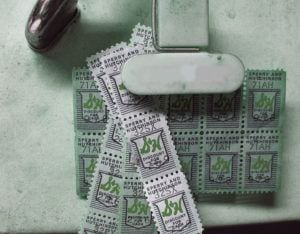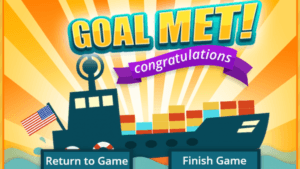Whether we know it or not, there’s business gamification in everything we do.
From employee engagement software that features leaderboards, to loyalty programs at our favorite stores – there’s not a single area of our lives that hasn’t been touched by gamification.
However, the concept of gamification in business has a long history. And like with any type of history, there’s a lot we can learn from it.
Let’s take a look!
It All Began in 1896…
If we think retailers are spoiling us rotten today with different loyalty programs including multiple levels and collecting points like Super Mario, then we’re in for a ride.
The first time retailers used gamification in business to engage their customers was back in 1896 with the S&H Green Stamps.
How did it work back then?
Well, retailers like gas stations, supermarkets, and stores distributed the stamps to loyal customers at checkout. The denomination depended on the purchase amount, and the customers could then add their stamps to a collector’s book.
Filling each page in this collector’s book required 50 stamps/points, which could then be exchanged for gifts like houseware.
This is pretty gamified, even for the 21st century standards as it involves collecting points and getting rewards, and it worked great.
Until the seventies, when the recessions struck.
The First Decline of Gamification in Business
The first problem was the recessions in the 1970s which made the stamps effectively worthless.
Additionally, customers were angered because the rewards were barely discounted. A lot of them had spent money to get points needed to get a discounted item, and now they’d either have to spend a lot more money or face the losses.
Finally, the last nail in S&H’s coffin was a Supreme Court ruling accusing them of violating the Unfairness Doctrine because restricting the trade of stamps was illegal.
Since no one was finding gamification in business worth the trouble anymore, its popularity came to a halt.
But not for long.
The Game of Work and Gamification in the Workplace
While customers and courts grew dissatisfied with gamification (which wasn’t called gamification back in the day), Charles Coonradt realized that feedback at work and employee motivation doesn’t have to be all that boring.
In 1985, he published a book called The Game of Work that applied sports feedback to the contemporary workplace, and it introduced the features we now know to call gamification:
- Scorekeeping through scorecards
- Frequent feedback
- Coaching
- Goal setting
- Personal choice of methods
And at the same time, hotels and airlines started rewarding their clients.
Gamification in Business: Loyalty Programs, Phase 2
In the 1980s, traveling was still glamorous, and the more exclusive customers could feel, the longer the service providers would be in business.
So where S&H once offered stamps, airlines, hotels, and car rentals decided to provide their customers with VIP experiences rewarding their loyalty.
For example, American Airlines created the AAirPass.
If customers collected enough points, they’d get first-class tickets, access to VIP lounges, and much more. They even sold lifetime tickets for a one-time fee of $250,000.
And the best part is that American Airlines started it because they were struggling with revenue. Gamifying their business helped a lot.
At the same time, hotels were creating their own loyalty programs. There were perks everywhere, and customers felt as though the only thing they had to do was collect points.
The Real Gamification in Business Started with Video Games
Gamification in business didn’t start getting really serious until the 1990s, at which point over 30% of American households owned a NES.
Suddenly, everyone was realizing how fun video games were, and when we were given the same elements in our daily lives, the revolution started.
The Serious Gaming Initiative in 2002 showed the world the benefits of gaming for every aspect of our lives. Games could be used to teach people about fiscal policies, healthcare, and so much more.
The so-called serious games were both educational and entertaining, improving the adoption of new knowledge while keeping the players entertained.
When Bunchball created Dunder Mifflin Infinity in 2007, a gamified website for The Office, it got over 8 million views in less than two months.
It became clear than gamification is the real deal.
From 2010 to Infinity!
Businesses were taking notes, and then DevsHub added a points system to their website in 2010. They increased their user engagement by 70% so not only were people interested in serious games.
They were also interested in seeing gamification everywhere.
From there onward, seminars were organized, sites like Coursera started holding courses on gamification, and we’ve slowly reached today’s point.
Right now, gamification is predicted to be worth $2.8 billion over the next two years, and we’re loving it.
While it’s not as revolutionary as back in 1896, it’s still engaging.
And that’s all it has to be.






